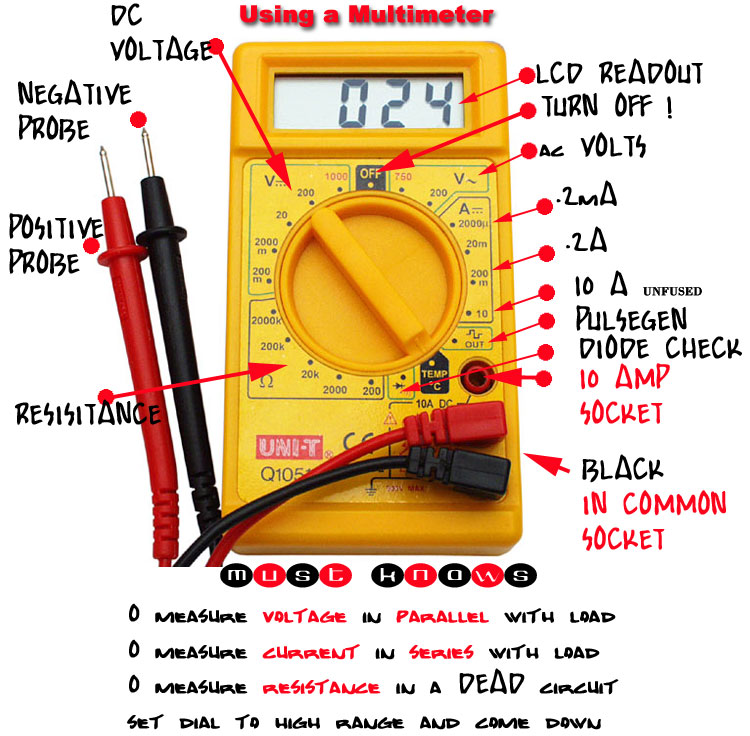Decoding Your Multimeter: AC/DC Symbols and More
Ever stared at your multimeter, puzzled by the squiggly lines and cryptic letters? You're not alone. The world of electrical testing can seem daunting, but understanding the fundamental AC/DC symbols on your multimeter is the first step to confidently navigating circuits and diagnosing electrical issues. This guide will demystify these symbols and equip you with the knowledge to wield your multimeter effectively.
A multimeter, the Swiss Army knife of electricians and DIY enthusiasts, is an indispensable tool for measuring various electrical properties like voltage, current, and resistance. Whether you're troubleshooting a faulty appliance, installing new wiring, or simply checking the battery in your remote, a multimeter is essential. However, its effectiveness relies heavily on your ability to interpret the information it displays, starting with the AC/DC symbols that dictate the type of electrical current you're measuring.
Understanding the difference between alternating current (AC) and direct current (DC) is crucial. AC, the type of electricity that powers our homes, constantly reverses its direction. The AC symbol on a multimeter, often represented by a wavy line (~), signifies that the meter is set to measure this fluctuating current. DC, on the other hand, flows consistently in one direction, like the current from a battery. The DC symbol, typically a straight line with a dashed line beneath it (⎓), indicates the meter is prepared for DC measurements. Selecting the wrong setting can lead to inaccurate readings or even damage your multimeter.
The history of the multimeter is closely tied to the development of electrical technology itself. Early multimeters were analog devices, relying on delicate needle movements to indicate measurements. Modern digital multimeters offer increased precision and ease of use, displaying numerical readings on an LCD screen. The importance of the multimeter has only grown with the increasing complexity of electrical systems in our homes, vehicles, and industries.
One of the main issues surrounding AC/DC symbols on multimeters is the potential for misinterpretation. Users unfamiliar with the symbols might inadvertently select the wrong setting, leading to erroneous readings. Furthermore, wear and tear on the multimeter's markings can make the symbols difficult to discern. This emphasizes the need for clear understanding and proper multimeter maintenance.
The AC symbol (~) represents alternating current, which periodically reverses its direction. A simple example is the electricity supplied to our homes.
The DC symbol (⎓) denotes direct current, which flows consistently in a single direction. Batteries provide a classic example of DC power.
Benefits of understanding AC/DC symbols:
1. Accurate Measurements: Selecting the correct setting ensures precise readings, crucial for accurate diagnosis and safe electrical work.
2. Preventing Damage: Choosing the wrong setting, especially when measuring high voltages, can damage your multimeter and pose a safety hazard.
3. Versatility: Correctly interpreting the symbols unlocks the full potential of your multimeter, allowing you to measure a wider range of electrical properties.Action Plan for using a multimeter:
1. Identify the type of current you need to measure (AC or DC).
2. Select the corresponding setting on your multimeter using the rotary dial or buttons.
3. Connect the test probes correctly to the circuit or component.
4. Observe the reading on the display and interpret the results based on the chosen units (volts, amps, ohms).Advantages and Disadvantages of Digital Multimeters
| Advantages | Disadvantages |
|---|---|
| Accurate readings | Can be more expensive than analog |
| Easy to read digital display | Requires batteries |
FAQ:
1. What does the AC symbol look like? It's a wavy line (~).
2. What does the DC symbol look like? It's a straight line with a dashed line beneath it (⎓).
3. What happens if I use the wrong setting? You can get inaccurate readings or damage your meter.
4. Why is it important to understand these symbols? For accurate measurements and safe operation.
5. What are some common uses for a multimeter? Testing batteries, checking continuity, measuring voltage and current.
6. Where can I learn more about multimeters? Online tutorials, electronics books, and manufacturer websites.
7. How do I choose the right multimeter? Consider your needs and budget.
8. Are there different types of multimeters? Yes, analog and digital.Tips and Tricks: Always double-check your settings. Ensure your probes are in good condition. Use the correct range for your measurement.
In conclusion, understanding the AC/DC symbols on your multimeter is fundamental to accurate electrical testing. These symbols, representing the nature of the current being measured, are the gateway to unlocking the full potential of this versatile tool. From simple household tasks to complex electrical projects, a firm grasp of these symbols empowers you to make informed decisions, diagnose problems effectively, and ensure safe operation. By learning the intricacies of your multimeter, you gain control over your electrical environment, transforming a potentially daunting task into an empowering experience. So, next time you pick up your multimeter, take a moment to appreciate the significance of those seemingly simple symbols – they are the key to unlocking a world of electrical understanding.
Unzipping the mystery a guide to opening your form 16b
Fifa 17 on 4gb ram can you play
Navigating salary adjustments a guide to understanding pay cut policies














